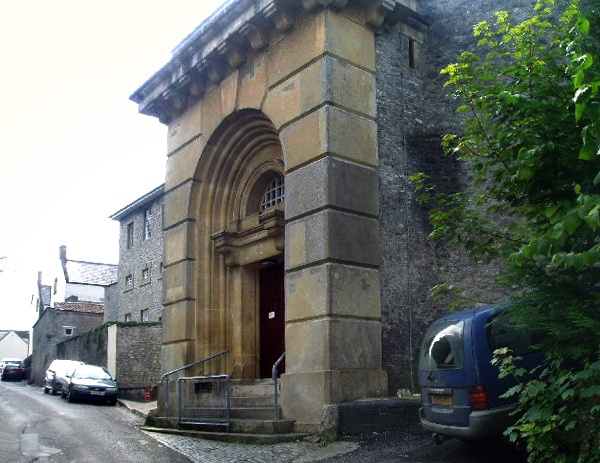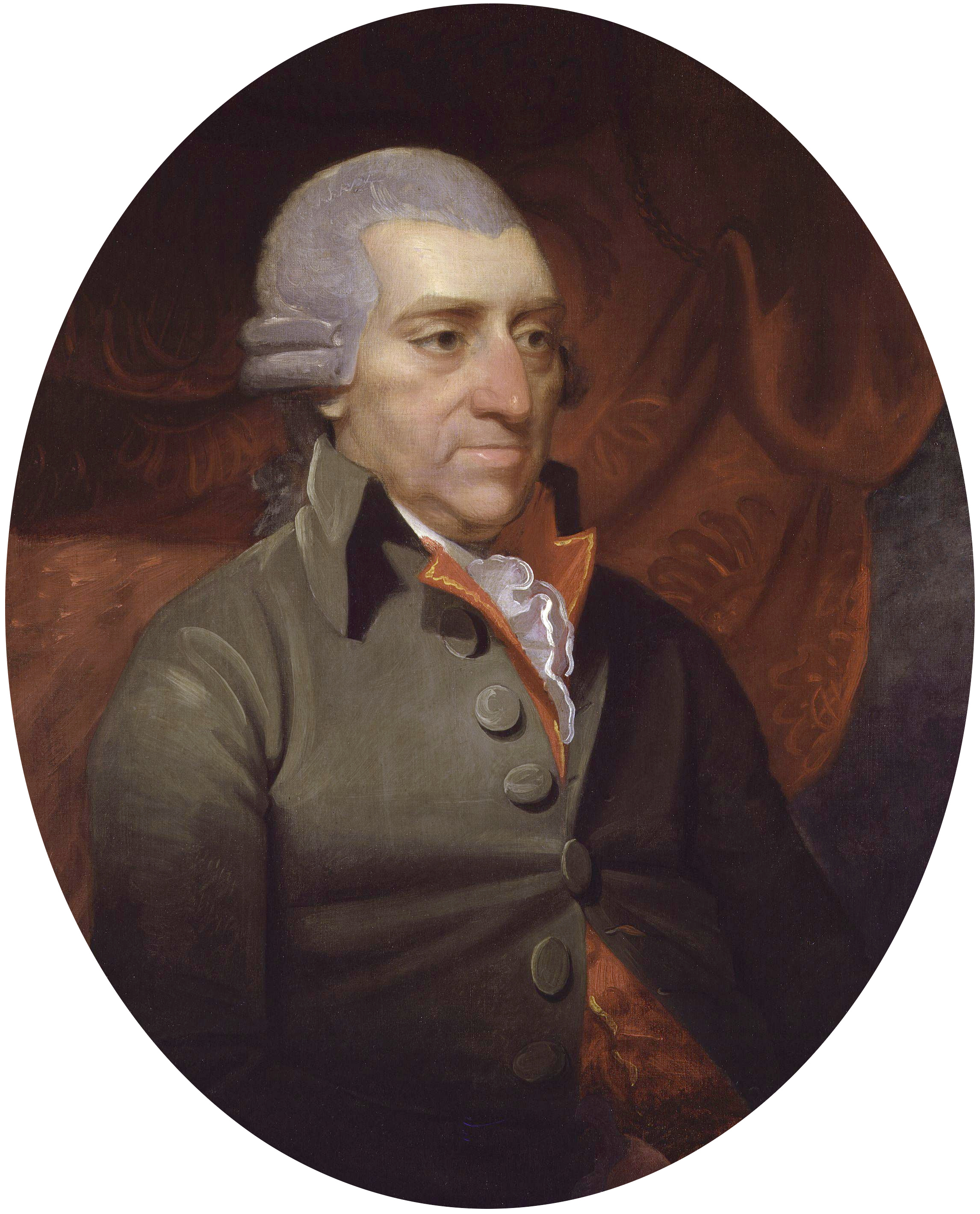|
HM Prison Shepton Mallet
HMP Shepton Mallet, sometimes known as Cornhill, is a former prison located in Shepton Mallet, Somerset, England. When it closed in 2013, it was the United Kingdom's oldest operating prison, and had been since the closure of HMP Lancaster Castle in 2011. Before closure Shepton Mallet was a category C lifer prison holding 189 prisoners. The prison building is grade II* listed, while the former gatehouse and perimeter walls are grade II. The prison was opened before 1625 but was already in poor repair by the end of the First English Civil War in 1646. It was expanded in 1790 but conditions were again criticised in a report of 1822 and further building work was undertaken in the 1820s and 1830s. This included the installation of a treadwheel for those sentenced to hard labour. In 1843 the number of cells was increased by adding a second storey to each wing. The prison was damaged during a fire in 1904. In 1930 the number of inmates had fallen and the prison was closed. Followi ... [...More Info...] [...Related Items...] OR: [Wikipedia] [Google] [Baidu] |
House Of Correction
The house of correction was a type of establishment built after the passing of the Elizabethan Poor Law (1601), places where those who were "unwilling to work", including vagrants and beggars, were set to work. The building of houses of correction came after the passing of an amendment to the Elizabethan Poor Law. However the houses of correction were not considered a part of the Elizabethan Poor Law system because the Act distinguished between settled poor and wandering poor. The first London house of correction was Bridewell Prison, and the Middlesex and Westminster houses also opened in the early seventeenth century. Due to the first reformation of manners campaign, the late seventeenth century was marked by the growth in the number of houses of correction, often generically termed ''bridewells'', established and by the passage of numerous statutes prescribing houses of correction as the punishment for specific minor offences. Offenders were typically committed to houses o ... [...More Info...] [...Related Items...] OR: [Wikipedia] [Google] [Baidu] |
Sir John Hippisley, 1st Baronet
Sir John Coxe Hippisley, 1st Baronet (c. February 1746 – 3 May 1825), was a British diplomat and politician who pursued an 'unflagging, though wholly unsuccessful, quest for office' which led King George III of Great Britain to describe him as 'that busy man' and 'the grand intriguer'. Early life and overseas appointments Born John Cox Hipsley in Bristol in 1746, he was the son of William Hipsley, a haberdasher, and Ann Webb. His middle name derived from his paternal grandmother, Dorothy Cox. He was educated at Bristol Grammar School and at Hertford College, Oxford, becoming a Doctor of Civil Law in 1776. He became a student at the Inner Temple in 1766 and was called to the bar in 1771. He was Treasurer of the Inner Temple from 19 November 1813 to 17 November 1814 and his monogram can be seen above the doorways of Nos. 10 and 11 King's Bench Walk. In 1779 Hippisley travelled to Italy where he became the British government's man in Rome. He married his first wife Margaret ... [...More Info...] [...Related Items...] OR: [Wikipedia] [Google] [Baidu] |
HMP Shepton Mallet March 2018 32
HMP may refer to: Science and technology * Haughton–Mars Project * Host media processing, a telephony processing technique * Human Microbiome Project * Harmonic mean p-value, a technique for combining statistical tests Computing * Heterogeneous multi-processing, internal use model of the ARM big.LITTLE architecture * Host Monitoring Protocol, an obsolete TCP/IP protocol Other uses * h.m.p. (Japan), a Japanese adult video company * Hampton railway station (London), London, National Rail station code * HM Prison, His/Her Majesty's Prison * Northern Mashan Miao language, ISO 639-3 code * Tommy Suharto Hutomo Mandala Putra (born 15 July 1962), commonly known as Tommy Suharto, is an Indonesian businessman, politician, and convicted murderer. The youngest son of Suharto, the second President of Indonesia, he has long had a reputation for nepoti ... (Hutomo Mandala Putra, abberivated HMP), Indonesian politician and businessman, youngest son of former Indonesian president Suharto< ... [...More Info...] [...Related Items...] OR: [Wikipedia] [Google] [Baidu] |
John Howard (prison Reformer)
John Howard FRS (2 September 1726 – 20 January 1790) was a philanthropist and early English prison reformer. Birth and early life Howard was born in North London, either in Hackney or Enfield. His father, also John, was a wealthy upholsterer at Smithfield Market in the city. His mother Ann Pettitt, or Cholmley, died when he was five years old, and, described as a "sickly child", he was sent to live at Cardington, Bedfordshire, some fifty miles from London, where his father owned property. His father, a strict disciplinarian with strong religious beliefs, sent the young John to a school in Hertford run by John Worsley. He went on from there to a dissenting academy run in London by John Eames. After school, John was apprenticed to a wholesale grocer to learn business methods, but he was unhappy. When his father died in 1742, he was left with a sizeable inheritance but no true vocation, a Calvinist faith and a quiet, serious disposition. Early travels In 1748, Howard left E ... [...More Info...] [...Related Items...] OR: [Wikipedia] [Google] [Baidu] |
Sheriff
A sheriff is a government official, with varying duties, existing in some countries with historical ties to England where the office originated. There is an analogous, although independently developed, office in Iceland that is commonly translated to English as ''sherif''. Description Historically, a sheriff was a legal official with responsibility for a shire, the term being a contraction of " shire reeve" (Old English ). In British English, the political or legal office of a sheriff, term of office of a sheriff, or jurisdiction of a sheriff, is called a shrievalty in England and Wales, and a sheriffdom in Scotland. In modern times, the specific combination of legal, political and ceremonial duties of a sheriff varies greatly from country to country. * In England, Northern Ireland, or Wales, a sheriff (or high sheriff) is a ceremonial county or city official. * In Scotland, sheriffs are judges. * In the Republic of Ireland, in some counties and in the cities of Dubli ... [...More Info...] [...Related Items...] OR: [Wikipedia] [Google] [Baidu] |
Smallpox
Smallpox was an infectious disease caused by variola virus (often called smallpox virus) which belongs to the genus Orthopoxvirus. The last naturally occurring case was diagnosed in October 1977, and the World Health Organization (WHO) certified the global eradication of the disease in 1980, making it the only human disease to be eradicated. The initial symptoms of the disease included fever and vomiting. This was followed by formation of ulcers in the mouth and a skin rash. Over a number of days, the skin rash turned into the characteristic fluid-filled blisters with a dent in the center. The bumps then scabbed over and fell off, leaving scars. The disease was spread between people or via contaminated objects. Prevention was achieved mainly through the smallpox vaccine. Once the disease had developed, certain antiviral medication may have helped. The risk of death was about 30%, with higher rates among babies. Often, those who survived had extensive scarring of their ... [...More Info...] [...Related Items...] OR: [Wikipedia] [Google] [Baidu] |
Parliament (UK)
The Parliament of the United Kingdom is the supreme legislative body of the United Kingdom, the Crown Dependencies and the British Overseas Territories. It meets at the Palace of Westminster, London. It alone possesses legislative supremacy and thereby ultimate power over all other political bodies in the UK and the overseas territories. Parliament is bicameral but has three parts, consisting of the sovereign (King-in-Parliament), the House of Lords, and the House of Commons (the primary chamber). In theory, power is officially vested in the King-in-Parliament. However, the Crown normally acts on the advice of the prime minister, and the powers of the House of Lords are limited to only delaying legislation; thus power is ''de facto'' vested in the House of Commons. The House of Commons is an elected chamber with elections to 650 single-member constituencies held at least every five years under the first-past-the-post system. By constitutional convention, all government mini ... [...More Info...] [...Related Items...] OR: [Wikipedia] [Google] [Baidu] |
Market Cross, Shepton Mallet
The Market Cross in Shepton Mallet, Somerset, England was built around 1500 and rebuilt in 1841. It is a Grade II* listed building, and has been scheduled as an ancient monument. History The first market cross on the site in the centre of Shepton Mallet by 1500. A plaque says this was funded at a cost of £20 by Walter Buckland and his wife Agnes. In 1685 following the Monmouth Rebellion 12 of the followers of James Scott, 1st Duke of Monmouth were hanged, drawn and quartered at the market cross. In 1841 the market cross was rebuilt by George Phillips Manners. In 2012 the lead on the roof and surrounding stonework was restored. Architecture The tall hexagonal structure is built of Doulting stone. It has a central pier surrounded by six arches forming an arcade. The roof has a central spirelet. There is a parapet with crocketed finial A finial (from '' la, finis'', end) or hip-knob is an element marking the top or end of some object, often formed to be a decorative featur ... [...More Info...] [...Related Items...] OR: [Wikipedia] [Google] [Baidu] |
Hanged, Drawn And Quartered
To be hanged, drawn and quartered became a statutory penalty for men convicted of high treason in the Kingdom of England from 1352 under Edward III of England, King Edward III (1327–1377), although similar rituals are recorded during the reign of Henry III of England, King Henry III (1216–1272). The convicted traitor was fastened to a hurdle, or wooden panel, and drawn by horse to the place of execution, where he was then hanged (almost to the point of death), emasculation, emasculated, disembowelment, disembowelled, decapitation, beheaded, and Dismemberment, quartered (chopped into four pieces). His remains would then often be displayed in prominent places across the country, such as London Bridge, to serve as a warning of the fate of traitors. For reasons of public decency, women convicted of high treason were instead Burning of women in England, burned at the stake. The same punishment applied to traitors against the King in Ireland from the 15th century onward; William ... [...More Info...] [...Related Items...] OR: [Wikipedia] [Google] [Baidu] |



